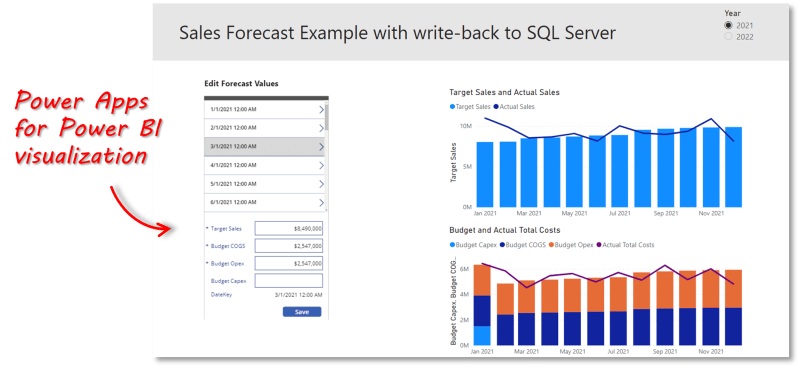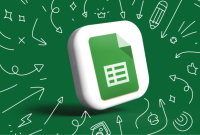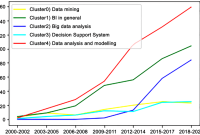Sqlserver Business Intelegence Project Types – If you are designing a solution using Power BI or using Power BI with other data platform components for a large organization. How to get started and what are the best ways to ensure success? I started a series of 12 blog posts on this topic starting in July 2020. If you check all the boxes listed in these 12 topics, you are on your way to a successful BI solution. Almost all the planned topics have been completed, but most of these posts are less than two years of blog history. I’ve linked to the original posts and provided a brief summary to make each item as poignant as possible. These are my opinions and passion for “doing it right”.
Before you jump in, understand the purpose, long-term, and short-term goals of the solution you’re building. Power BI allows you to quickly create reports, resources and data. But, often at the expense of maintaining data governance, data quality and long-term sustainability. Will your first project be a proof of concept or fully production ready? Here are some questions to consider as you go down this path:
Sqlserver Business Intelegence Project Types
Power BI is an incredible self-service reporting tool that can be used to quickly acquire and analyze a set of data. Sustainable, enterprise-scale solutions require scalable thinking. For convenience, Power BI Desktop allows you to quickly visualize the source data, but a robust solution consists of three layers: data transformation, data modeling and data presentation. Query and change processes, data modeling and report development are implemented and managed by three different people.
Connecting To Data Source(s) With Sql Server Analysis Services
Power Query is an amazing data transformation tool that offers power and flexibility when used effectively. Some transformation steps that work with small data sets do not work well with large data sources. Understand strengths and weaknesses and learn to work with them. In particular, learn how to use parameters, range filters, and query folding.
ETL work has always been a routine and process discipline. Power Query makes this easy, but well-designed and manageable transformation queries follow well-defined patterns. Once you’ve chosen the transformations that work best with the right amount of source data, follow these guidelines:
Dataflow is a web implementation of Power Query in the Power BI service. Queries can be designed in a browser and then shared across multiple databases, instead of writing queries in Power BI Desktop and storing them in PBIX files. There are many good reasons to use Dataflows, but they are not a silver bullet solution for every environment.
A common use case for Dataflows is to provide standard transformations and data units when not defined in a standard database. If you have an existing database, some data streams may be redundant. However, they also enable interesting features such as data visualization and AutoML. Start with the basics and learn how to use PQ on the desktop, then consider using Dataflows when needed.
What Is Business Intelligence
Data models are the core of Power BI and analytical reporting in Data Platform. If you get the data model right, many other things – such as measurement calculations and reporting capabilities – will work. Dimensional thinking is paradigmatic and requires rethinking the way you transform and manage data. Before you convince yourself that you don’t need a star schema for your reporting needs, learn to apply standard model design patterns and discard rare cases. Star Design solves 95% of analytical reporting and 90% of reporting needs.
Put any new report in front of a serious business user and they will ask, “How do I know this is true?” When data flows through multiple stages of a BI solution, you need to be sure that the results are accurate and correct. You can design your transformations, data models, measures and reports, track results and control every step of processing and verifying data and values. You can start validation by simply recording the data in each table. Next, create layers where you or someone else can see each component of the analysis and calculation of test results. In large projects, you can create test data models, compare and validate raw values and reported metrics.
Queries, data models, metrics, and reports are all bundled into a single PBIX file, making development fast and easy. However, it also prevents multiple developers from working on a solution at the same time. Separating the data model design from the report design by moving them into separate definition files not only helps separate the work, but also provides the freedom to create multiple reports that share a central data model. Although there is some work involved in separating the models from the reports, the benefits are immediate. Community supported tools make this task relatively simple and manageable.
Power BI is a web service hosted in the Microsoft Azure cloud. The most comprehensive option to publish and share all the goodness of Power BI (documents, interactive visualizations, dashboards, paginated reports, shared and certified data for self-reporting) is to use the capabilities of Power BI Premium. Once reports and data sheets are linked to the Workspace app, they can be viewed and used by any user in your organization. Premium supports big data analytics, auto-scaling and a number of other features for enterprise-scale reporting and analysis. The monthly cost of Premium is a big investment for serious customers and may not initially appeal to smaller organizations. Less expensive options may be a better choice for small shops or those who need to test the waters with their user audience before expanding their solution.
Monitoring Sql Server Reporting Services
When should you use reports instead of interactive Power BI reports? Paginated Reports is the new name for SQL Server Reporting Services (SSRS) as it has been integrated into Power BI Premium.
When we plan a Power BI solution, how do we plan for scale and growth? We can do “self-service BI” and “enterprise BI” with Power BI, but the approach is different. Here I discuss a series of three posts that started developing a large BI database – in short, following an enterprise design pattern may add some time and effort to your project, but the return on investment will be future solutions. Handles more data and features that extend durability as needed.
The Power BI service can handle a lot of data, but just because your data sources are large doesn’t mean your Power BI data table takes up a lot of space either. If the data model is designed effectively, even terabytes of source data typically translates into megabytes, or more often several gigabytes of data storage.
The topic of DevOps (Development Operations) and CI/CD (Continuous Integration/Continuous Delivery) for BI solutions is a multifaceted topic. In short, we can implement CI/CD for Power BI projects, but the dynamics are different for application development projects for various reasons. Depending on the size and scope of the project, if you need to apply strict DevOps processes, the approach can be relatively simple if you follow some basic guidelines or complex operations. The good news is that it can be done, but there isn’t necessarily a one-size-fits-all solution.
Power Bi Architecture For Multi Developer
I’ll start by categorizing projects by size and scope, and then introduce an approach for small and medium-sized projects with simple team management, publishing, and deployment needs. In this post: DevOps & CI/CD for Power BI. In the embedded YouTube video, I demonstrate using Teams and SharePoint along with query parameters in Power BI to manage documents in a simple code repository for small projects. I will also show you that I have created a GitHub repository for the same purpose.
This topic introduces a key element that is critical for any organization managing business data for reporting and analysis. It’s not a tool or thing that IT develops and installs. Data governance represents a change in organizational culture and a set of policies that determine ownership and decision making. The flowchart below is a small piece of the “management puzzle”.
From a data user perspective, consider the following options and decision points. This flowchart invokes three different use cases for the report user/analyst:
This guide primarily addresses the first two use cases, creating a data model to support enterprise reporting. or data models that intelligent business users use to visualize, explore, and create their own reports.
Working With Power Bi Data Models In Visual Studio Code
BI Industry BI Projects Business Analytics Microsoft BI Platform MVP Community PASS Power BI PowerPivot Power View Self Service BI SolidQ SQL Server SQLServerPedia SQL Server Pro Magazine SQL Coordination SSAS Management SSAS Design SSRS Management SSRS Design Table Models
& Workspace and Database Recovery Techniques Aaron Nelson Ad-hoc Report Column Addition Control Albert Ferrari




